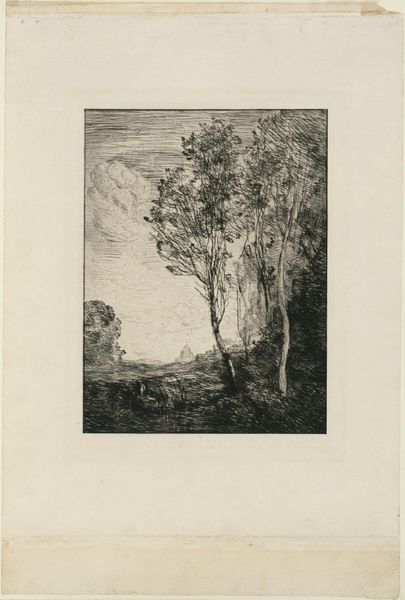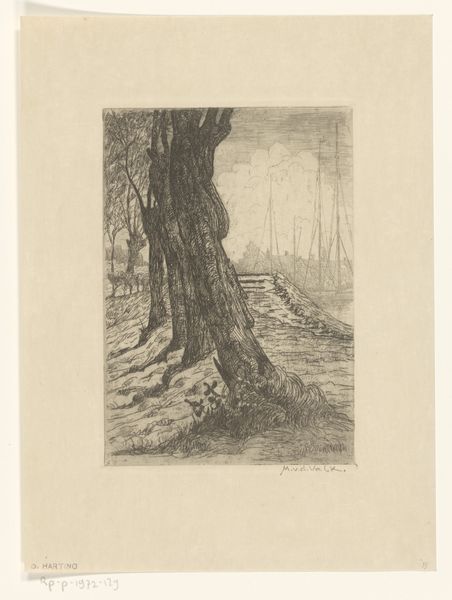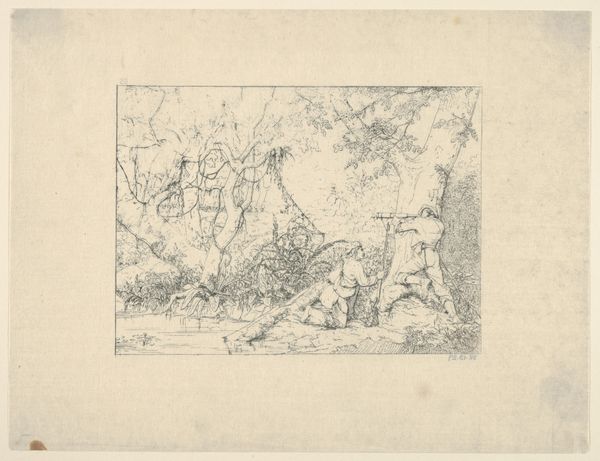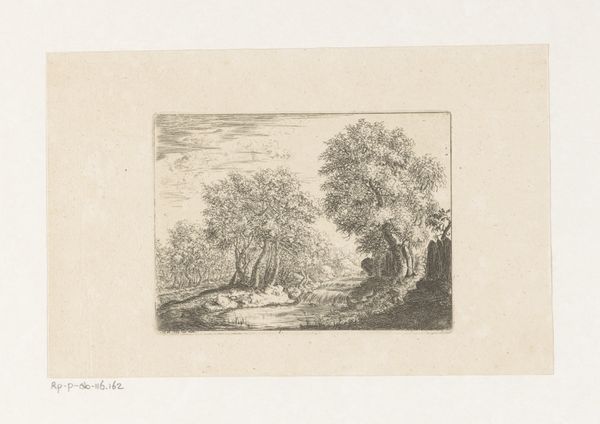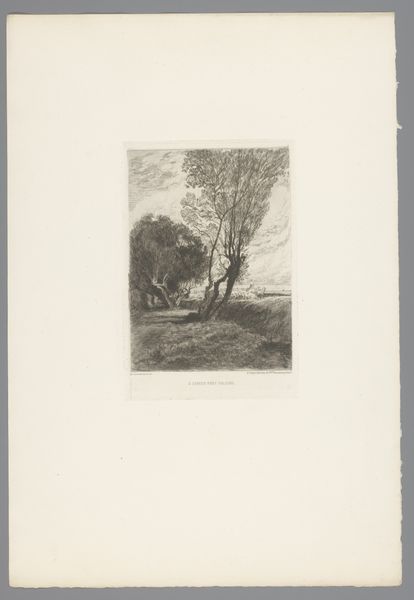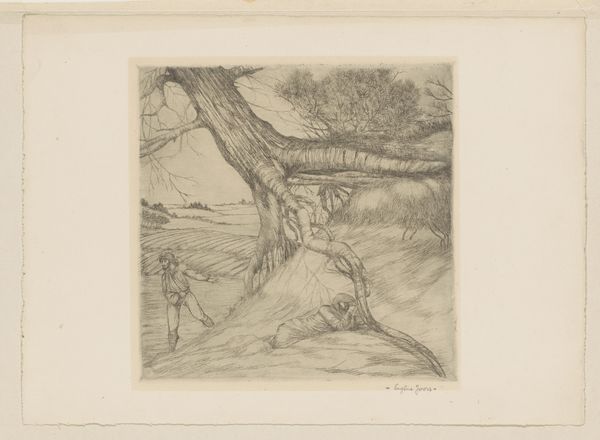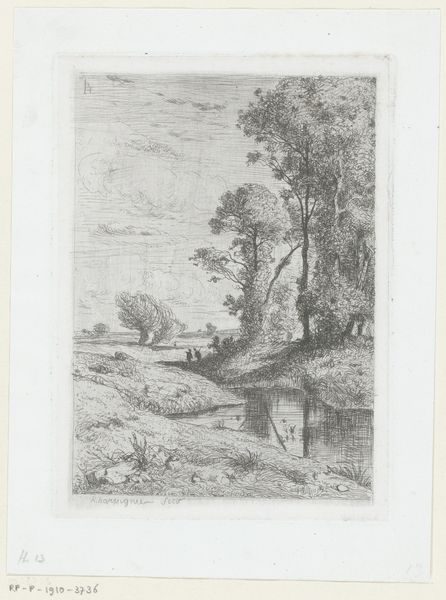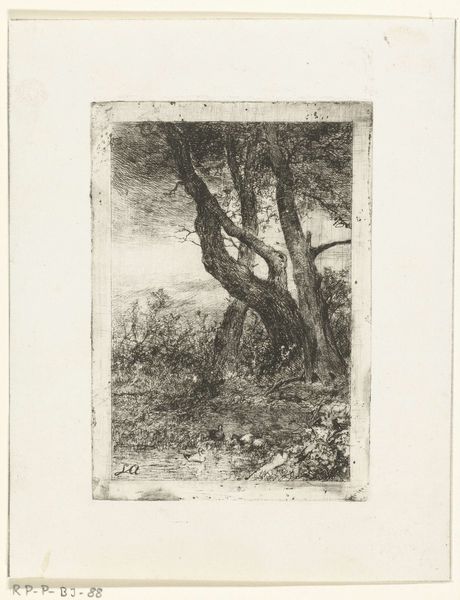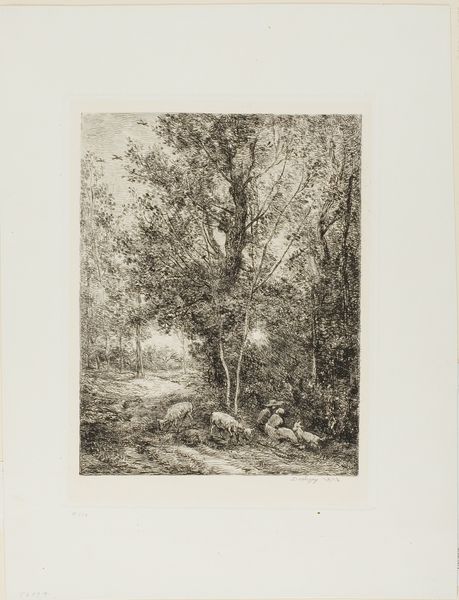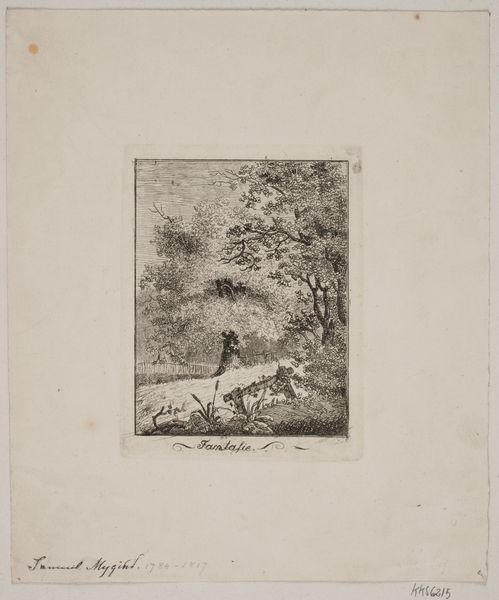
print, etching
#
dutch-golden-age
# print
#
etching
#
landscape
#
genre-painting
#
realism
Dimensions: height 180 mm, width 128 mm
Copyright: Rijks Museum: Open Domain
Editor: This is Gerard Altmann’s "Rustende koe aan de waterkant", or "Resting cow by the waterside," an etching made sometime between 1887 and 1940. I'm really struck by the peaceful, almost melancholic atmosphere. What stands out to you? Curator: The imagery of the resting cow beside the water taps into deep-seated associations. Consider the cow: it has long been a symbol of nourishment, of maternal giving, deeply rooted in agrarian societies. What does it mean, then, to depict this wellspring of life in a state of repose? Editor: I guess it disrupts that traditional symbolism, presenting a gentler, less demanding view. It's interesting against the Dutch Golden Age style too; less grandeur and more quiet observation. Curator: Precisely. The very act of etching allows for fine detail but also lends itself to shadow and nuance. Water often represents the subconscious, the ebb and flow of emotion. Notice how the reflection mirrors the cow, doubling its presence but also distorting it slightly. Do you see that distortion as a break or harmony with tradition? Editor: I see what you mean. The water almost absorbs the cow, suggesting vulnerability, rather than strength. Curator: Yes! This resonates with the cultural memory embedded in pastoral scenes, where nature is both nurturing and potentially indifferent. And the trees…they seem almost protective, guardians of this quiet moment. Their age and size hints at longevity. Editor: I never considered that, seeing how symbols interact and evolve. It really reframes the peace as something more complex. Thank you for your perspective. Curator: And thank you for your keen observations. Seeing these layered symbols offers richer view, don't you think?
Comments
No comments
Be the first to comment and join the conversation on the ultimate creative platform.


